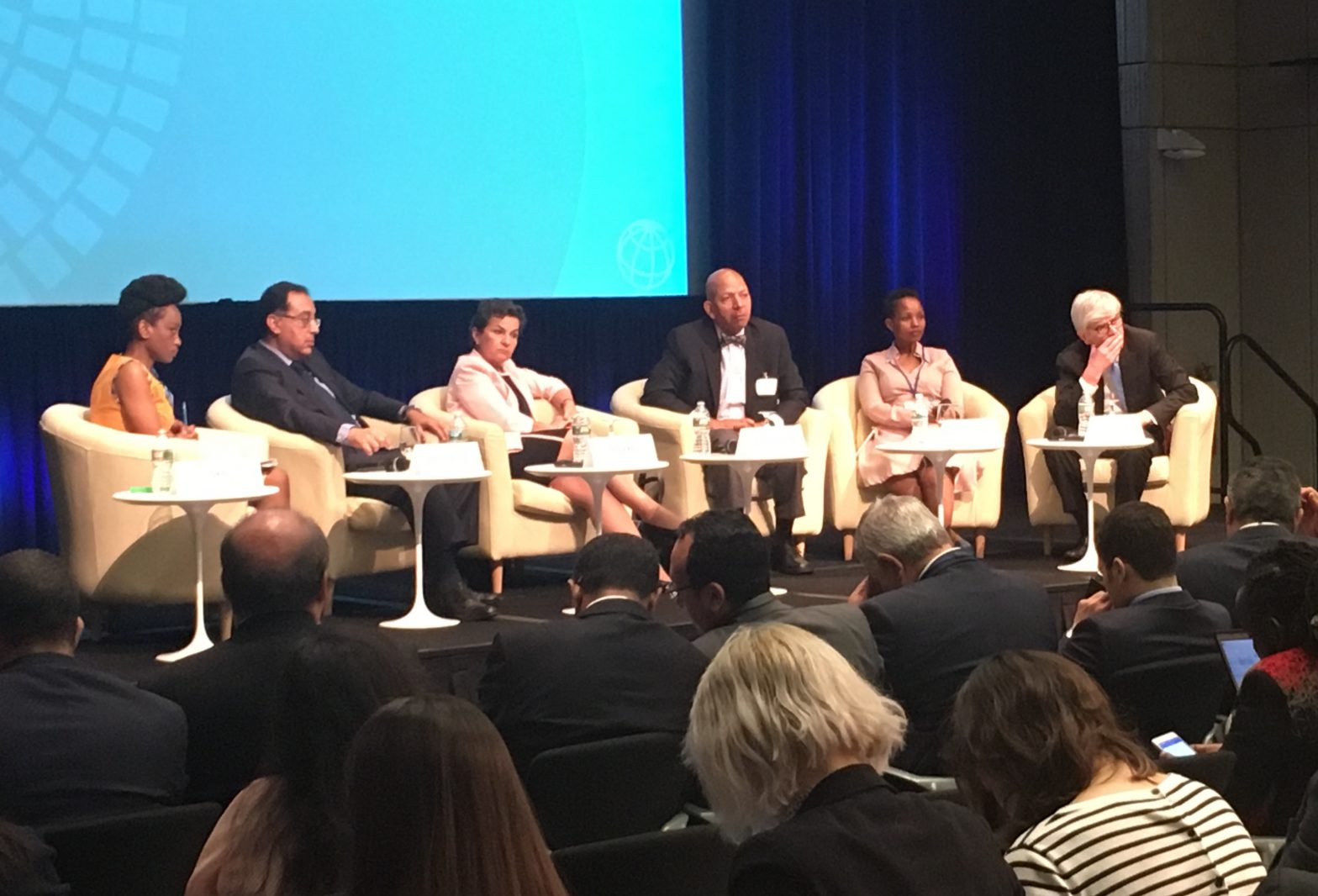
Photo: IMG_4676
Egypt to build new administrative capital
24 April 2017
by Jonathan Andrews
Egypt has begun designing a new administrative capital city to provide jobs and housing to millions seeking social and economic mobility as the country’s population booms.
Speaking before an audience at a panel discussion at the World Bank Spring Meetings on the role of cities in sustainable living conditions in the 21st century, Moustafa Madbouly, the Minister for Housing and Urban Development of Egypt, told listeners that the country currently takes in around 2.5 million new inhabitants each year. He added that around 50 to 60 percent of these are urban residents.
“We had to put in place a plan for the whole country as to how it will be in the coming thirty years until 2050. Based on this, we started to allocate where the potential development will go based on what’s going on in the last fifty to one hundred years of growth.”
The new capital, which has yet to be named, will be located 40 kilometres east of Greater Cairo, between Cairo and the Suez Canal. Implementation of the project began in 2016 after attracting initial investment, notably from The China Fortune Land Development Company, which has invested US$20 billion to develop part of the project. Once completed, the city is expected to accommodate around 5 million inhabitants, according to Madbouly.
Madbouly described the project as an “expansion for Greater Cairo”, though said one of its main goals will be to relocate the over-concentration of local government in the current capital. He said that at present, Cairo contains around 100,000 citizens per square kilometre.
As new inhabitants increase, Egypt’s satellite cities continue to fill up. Such cities, including Madinat Nasr, a well-known area of residence for Egyptian diplomats, have managed to accommodate more than 6 million people over the past 30 years.
Egypt could start to attract new residents to as many as ten new cities in the coming decade, Madbouly said. However the ambition to create a new capital is in part a preventative measure to avoid the establishment of informal settlements.
Madbouly outlined this concern by citing Alain Bertaud, a senior research scholar at the NYU Stern Urbanization Project, whom he said warns of the risk local governments take of allowing slums to thrive when planning of urban areas do not keep pace with urban growth. He described Johannesburg as one example of a city which, despite its attempts to enforce laws preventing local residents from entering during the Apartheid era, led instead to the creation of impoverished slums on its outskirts.
Asked by fellow panelist and diplomat Christiana Figueres what would make the new administrative capital different from other Egyptian cities, Madbouly said:
“From day one, we are trying to create a green city, a walkable city, a liveable city and a sustainable city.”











